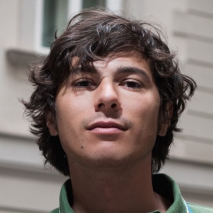


On 16 March 2020 the world started to shut down to curb the spread of COVID-19. One year later, existing societal inequities have been brought into sharp relief. In the higher education sector, in-person teaching, learning and research have faced severe interruptions or have been halted altogether. Faculty and student flexibility and mobility have been reduced, and university resources have been severely constrained and remain uncertain.
The impacts on early-career researchers and faculty are especially alarming. In addition to lost research and student training opportunities, reports of retracted postdoctoral and faculty offers, hiring freezes, pay cuts, lost professional development opportunities, and many young scholars dropping out of the workforce all threaten to lead to a “lost generation” of researchers if rapid action is not taken.
Today, two global networks of scholars, the InterAcademy Partnership (IAP) and the Global Young Academy (GYA), issue 'Reducing the impact of COVID-19 on inequalities in higher education: A call for action to the international community', a communiqué highlighting some of the most pressing challenges for higher education globally, and propose solutions to mitigate the further entrenchment of inequalities.
CHALLENGES. The main challenges in higher education highlighted in the communique are the reduction of flexibility and mobility, the interruption of research and career trajectories, the lack of access to fundamental learning resources, the increased complexity of students’ digital and learning needs, and the loss of human interaction from excess digitization in education delivery. Additionally, historically-disadvantaged groups, including women and those with childcare responsibilities, and early-career researchers, are those whose careers suffer the most because of the pandemic.
OPPORTUNITIES. The COVID-19 crisis and the associated expansion of digital connectivity has also provided opportunities for both teaching and research, especially concerning the promotion of open education and collaboration, the strengthening of student-centred learning and education delivery, and improved opportunities to partner with local experts and organizations such as senior and young academies.
SOLUTIONS. The IAP and the GYA provide a set of recommendations to university administrators, higher education policymakers, research funding agencies, academies and scholars.
To promote open education and research collaboration:
To expand digital connectivity and access to hardware:
To incorporate relevant local expertise:
QUOTES. Anindita Bhadra, Co-Chair of the GYA and Associate Professor at the Indian Institute of Science Education and Research, Kolkata, recounted, “As a behavioural biologist, our research on free-ranging dogs is entirely field-based. Our experiments had to be stopped and a couple of students got stuck in a different city due to the lockdown in India. Since then, we have yet to get back to full-fledged field work, research is in a limbo and students are losing precious time.”
“Those who today are at the early stage of their careers will be tomorrow’s leaders and innovators in health, science and technology. They will be the ones to find solutions to some of the world’s most pressing challenges, from the climate crisis to future emerging infectious diseases. The world cannot afford to lose them,” says IAP President Volker ter Meulen.
“Although the pandemic has presented major obstacles to universities, as faculty, it has forced us to re-examine how we can make our teaching and evaluation systems more effective,” said André Xuereb, GYA member, Associate Professor of Physics at the University of Malta, and one of the lead authors of the communique.
“We must seize on the opportunity we have now to strengthen partnerships among universities to share open source materials and software, both regionally, and globally,” added Mohamed Hassan, another lead author of the communique, a distinguished Sudanese mathematician, and President of The World Academy of Sciences for the advancement of science in developing countries (TWAS). “Universities around the world, higher education policymakers, research funding agencies, intergovernmental bodies and scholars themselves must work together to promote equity in higher education.”
The communique (https://interacademies.org/COVID_education) was endorsed by the Steering Committee members of the InterAcademy Partnership as well as the Executive Committee of the Global Young Academy.
NOTE TO EDITORS:
The InterAcademy Partnership (IAP)
Under the umbrella of the InterAcademy Partnership (IAP), more than 140 national, regional and global member academies work together to support the vital role of science in seeking evidence-based solutions to the world’s most challenging problems. In particular, IAP harnesses the expertise of the world's scientific, medical and engineering leaders to advance sound policies, improve public health, promote excellence in science education, and achieve other critical development goals. More information about IAP can be found at www.interacademies.org and on Twitter at @IAPartnership.
The Global Young Academy gives a voice to young scientists around the world
The vision of the GYA is science for all; science for the future, and its mission is to give a voice to young scientists and researchers around the world. The GYA, founded in 2010, is an independent science academy of 200 outstanding early- to mid-career researchers from six continents who are selected from across disciplines based on their academic excellence and commitment to engage with society. GYA members serve five-year terms, and the GYA presently counts members and alumni from 86 countries. The GYA administrative Office is publicly funded and hosted at the German National Academy of Sciences, Leopoldina. The wide array of GYA activities are supported by a range of international public and private funders. More information can be found at www.globalyoungacademy.net and on Twitter at @GlobalYAcademy.
Contact information for general enquiries:
Giovanni Ortolani, IAP Communications, Email: gortolani@twas.org; Phone: +39 040 224 0680.
James Curtiss, GYA Press Officer, Email: James.Curtiss@globalyoungacademy.net
Steering committee members and authors of the document are available for interviews.
Social media
Join our call: you can download images and videos you can youse on social media in our social media package at https://tinyurl.com/IAPGYAsocial or scroll down.
